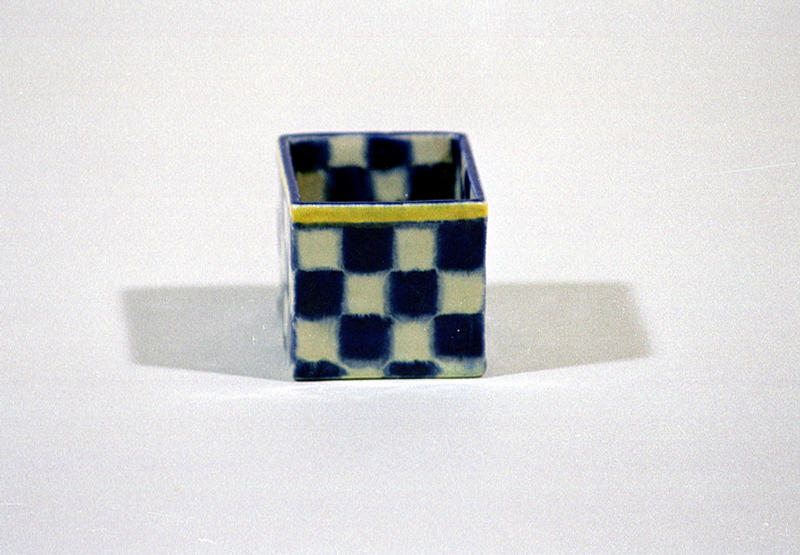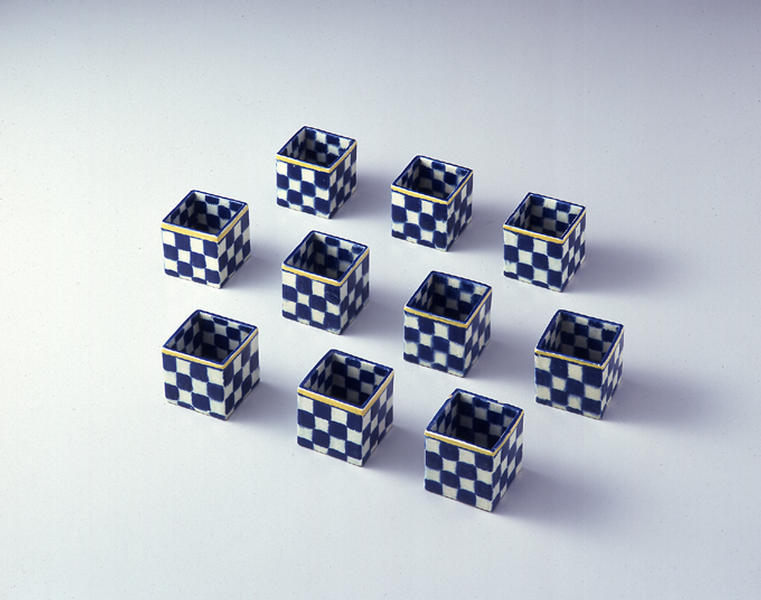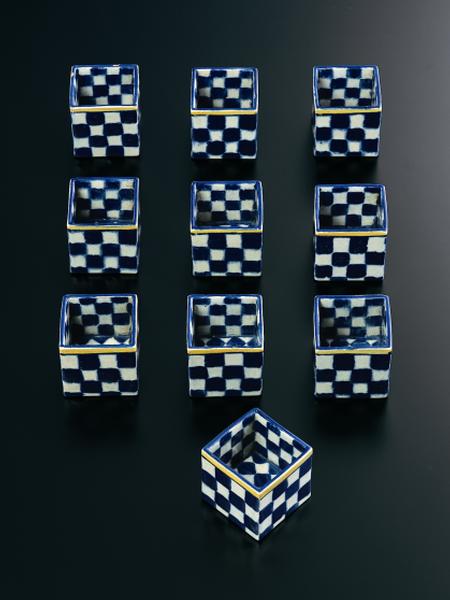Sake Cups in Dutch Pottery Style with Ichimatsu Checkerboard Design
- Kyoto
- Edo period
- 18-19c
- Kenzan ware, low-fired pottery, overglaze enamels
- H-4.5 D-5 W-4.5
Catalogue Entry
Kenzan established a kiln in the Narutaki region in Kyoto's northwest in 1699 and then in 1712, moved his kiln into the center of town, in the Nijo Chojiyacho district. This period has hence been dubbed Kenzan's Nijo Chojiyacho period. During this period Kenzan welcomed Ihachi as his successor, since dubbed Kenzan II, and they ran the Ihachi workshop as a companion kiln to that of Kenzan, collaborating and using Kyoyaki production methods. This period witnessed the growing popularity of the Kenzan ware “brand" and established Kenzan's fame. The workshop system allowed for the mass production of works to fill the large numbers of orders received, and the general nature of these requests led to a focus on food and serving bowls.
Kenzan was born the son of a kimono merchant and he used his own training and understanding of the many ideas and techniques he had experienced in various arts and decorative arts and applied them to his creation of ceramics. Delft ware from Holland was one of the many kinds of foreign ceramics which were imported into Japan in huge numbers from the end of the 16th century through 17th century, and here Kenzan has tried his hand at imitating Delft ware styles. White slip and cobalt blue have been applied in a checkerboard pattern called the Ichimatsu pattern in Japan. The interior of the bowl has been transformed, with the checkerboard pattern set at a 45 degree angle. The base of the cups are signed “Kenzan" and marked with the written seal “Ji". The careful formation and attention to detail found in these exquisite works can be seen in the fresh tones of the yellow rim and bright “Delft blue."



